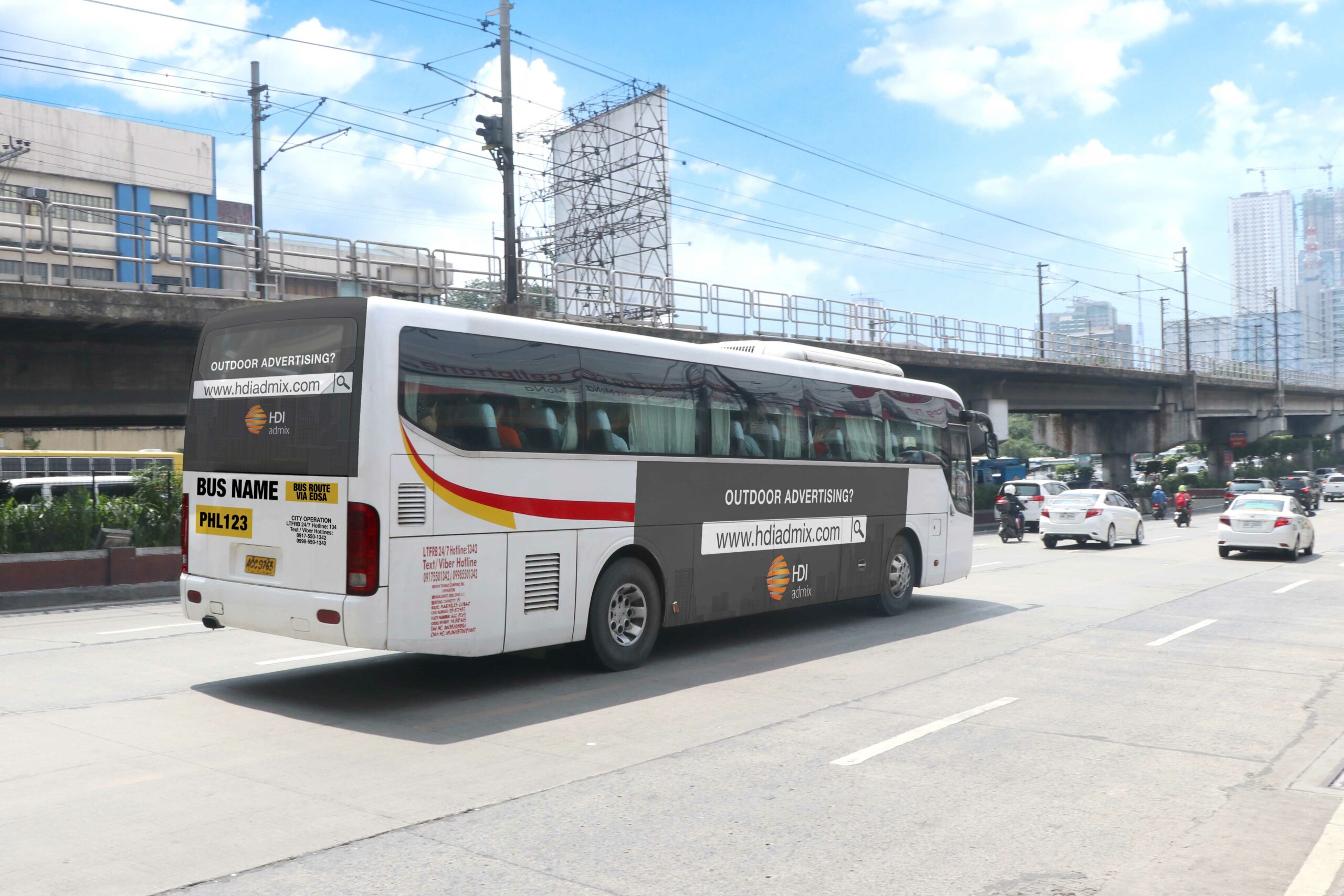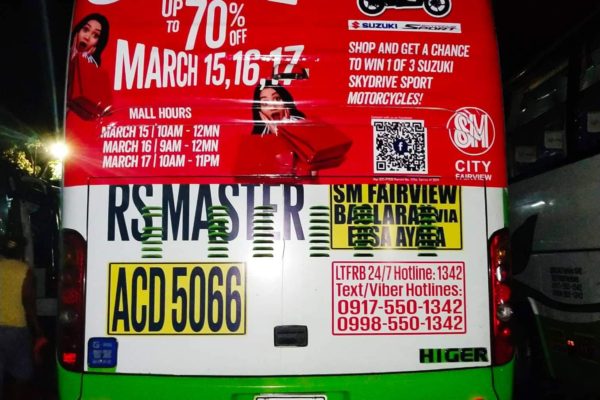Transit Advertising Philippines: Get To Hundreds Of Travelers Daily
Transit Advertising Philippines: Get To Hundreds Of Travelers Daily
Blog Article
Recognizing the Duty of Transportation Marketing in Enhancing Brand Visibility and Customer Interaction
Transit advertising and marketing has become a critical element in the advertising and marketing landscape, providing special opportunities for brands to elevate their presence and engage customers effectively. With the capacity to reach a restricted and diverse target market during their everyday commutes, these advertising and marketing strategies are not just regarding presence; they are concerning producing purposeful links with prospective customers. As we check out the complex advantages and cutting-edge methods within transit advertising and marketing, it ends up being important to consider just how these aspects collectively influence customer understanding and actions, questioning regarding their long-term influence on brand loyalty.
Definition of Transit Marketing
Transportation advertising and marketing describes the technique of advertising products, solutions, or brand names through ads put in and around public transportation systems. This form of marketing encompasses a variety of positionings, including posters on buses and trains, digital displays at transportation terminals, and wraps on the outside of lorries. It aims to reach a diverse target market, profiting from the high foot traffic related to public transportation.
Transit marketing is tactically placed to capture the focus of commuters, who usually invest significant time taking a trip or waiting. By incorporating ads right into the daily regimens of individuals, brands can develop a lasting impact and foster brand name acknowledgment. The tool is especially effective in metropolitan settings, where public transport is a key setting of travel.
Additionally, transportation marketing can help with localized targeting, enabling organizations to reach certain demographics based upon transportation paths and station areas. As city populations expand and the usage of public transportation boosts, this advertising technique has actually acquired prestige as an essential component of incorporated marketing approaches. The dynamic nature of transit advertising and marketing, combined with its ability to engage customers in a captive setting, highlights its relevance in contemporary advertising and marketing techniques.
Benefits of Transportation Marketing
The effectiveness of transit advertising depends on its capability to deliver a wide range of benefits to brand names seeking to enhance exposure and engagement. Among the main advantages is the extensive reach it supplies; transit advertisements can properly target varied demographics across city locations, reaching both pedestrians and travelers alike. This wide exposure considerably improves brand understanding.
An additional benefit is the high regularity of perceptions. As transit vehicles follow established paths and quit at numerous areas, they create recurring direct exposure that enhances brand messages. This regularity promotes familiarity, which is essential in customer decision-making.
Transit marketing is likewise cost-effective contrasted to other media platforms. Provided its large reach and capacity for high impacts, brand names frequently experience a reduced expense per thousand impressions (CPM), optimizing their marketing budget.
Additionally, transit advertisements can produce a sense of area connection. By lining up with regional transportation systems, brands can resonate with local audiences and promote a sense of neighborhood satisfaction. This localized method boosts brand commitment and engagement, making transit advertising an engaging selection for businesses intending to solidify their existence in the marketplace.

Reliable Methods for Transit Campaigns
To maximize the influence of transportation projects, brand names should leverage tactical planning and implementation tailored to their target audience. First, determining the group attributes of the target market using public transportation is crucial. This allows brands to develop personalized messaging that resonates with potential clients.
Next, picking the ideal transportation tools is essential. Whether making use of bus covers, train posters, or digital displays, each medium has special advantages that can improve exposure. For circumstances, dynamic visuals on bus covers can stand out, while digital ads can be upgraded regularly to reflect timely promotions.
In addition, integrating a cohesive branding technique across transportation systems makes certain consistency and strengthens the brand's discover here identification. Making use of attractive styles and unforgettable taglines will reinforce brand recall among commuters.
Lastly, timing is a vital factor in performing successful transit projects. Launching campaigns during optimal travel hours or local events can significantly increase presence and interaction. By using these strategies, brand names can efficiently harness the capacity of transit marketing, fostering better understanding and link with their target market. Ultimately, a well-executed transportation project can drive considerable growth in brand presence and customer interaction.

Gauging Influence and Interaction
In assessing the performance of transportation ad campaign, accurate dimension of impact and involvement is necessary for brands looking for to enhance their marketing approaches. Metrics such as reach, regularity, and impressions give foundational information to evaluate presence. Evaluating these factors aids figure out how several prospective consumers are subjected to the promotions during their day-to-day commutes.
Interaction can be further assessed through consumer communications, such as site web traffic, social media points out, and direct feedbacks to calls-to-action featured in the advertisements. Utilizing tools like QR codes or one-of-a-kind Links can assist in monitoring of customer behavior directly connected to transportation campaigns. Studies and feedback devices also function as beneficial methods to gather qualitative information on customer understandings and recall of the promotion.
Moreover, advanced analytics and acknowledgment versions can associate transit exposure with subsequent getting habits, supplying insights into the return on investment. By utilizing a thorough approach that combines qualitative and quantitative measures, brands can establish a nuanced understanding of their transit advertising effect. Ultimately, this data-driven method makes it possible for brand names to improve their projects, guaranteeing they reverberate properly with target market and enhance overall brand visibility.
Case Research Studies of Successful Campaigns
Successful transit marketing campaign work as engaging instances of just how efficient methods can raise brand visibility and engagement. Transit Advertising Philippines. One noteworthy case is the "I Love New york city" project, which transformed the city's image and attracted numerous visitors. By making use of metro advertisements, signboards, and bus wraps, the campaign developed a solid, cohesive brand name identification, causing a substantial uptick in tourism and local organization patronage
An additional exemplary project is Coca-Cola's "Share a Coke" effort, which leveraged transit advertising to personalize the brand name experience. By featuring preferred names on advertising materials throughout different transit systems, Coca-Cola promoted a deeper psychological connection with customers, motivating them to share their experiences on social media.
In addition, the "Got Milk?" campaign properly used public transportation ads to get to a broad audience, enhancing the message of the value of milk in a balanced diet plan. The campaign saw a quantifiable increase advice in milk usage in target demographics.
These case researches illustrate that when carried out thoughtfully, transit advertising and marketing can substantially enhance brand name visibility, foster customer involvement, and drive measurable results, showing its important role in modern-day marketing methods. - Transit Advertising Philippines
Conclusion
In final thought, transportation advertising acts as an essential tool for enhancing brand presence and promoting customer involvement. By utilizing purposefully put promotions within public transport systems, brands can successfully strengthen and reach diverse audiences recognition with regular direct exposure. The implementation of targeted messaging and ingenious approaches better enhances the effect of transportation projects. Ultimately, the ability to determine interaction and examine effective study emphasizes the effectiveness of transit marketing in driving brand loyalty and consumer interactions.
Transit advertising has actually arised as an essential aspect in the advertising landscape, using like this special chances for brands to boost their exposure and engage customers successfully.Furthermore, transit advertising and marketing can promote local targeting, allowing businesses to get to particular demographics based on transportation paths and station areas.In reviewing the performance of transit advertising projects, accurate dimension of impact and involvement is necessary for brands seeking to enhance their marketing approaches.Successful transportation advertising projects serve as engaging instances of exactly how effective methods can elevate brand name visibility and interaction.In verdict, transit advertising and marketing offers as a crucial tool for improving brand name visibility and cultivating consumer interaction.
Report this page